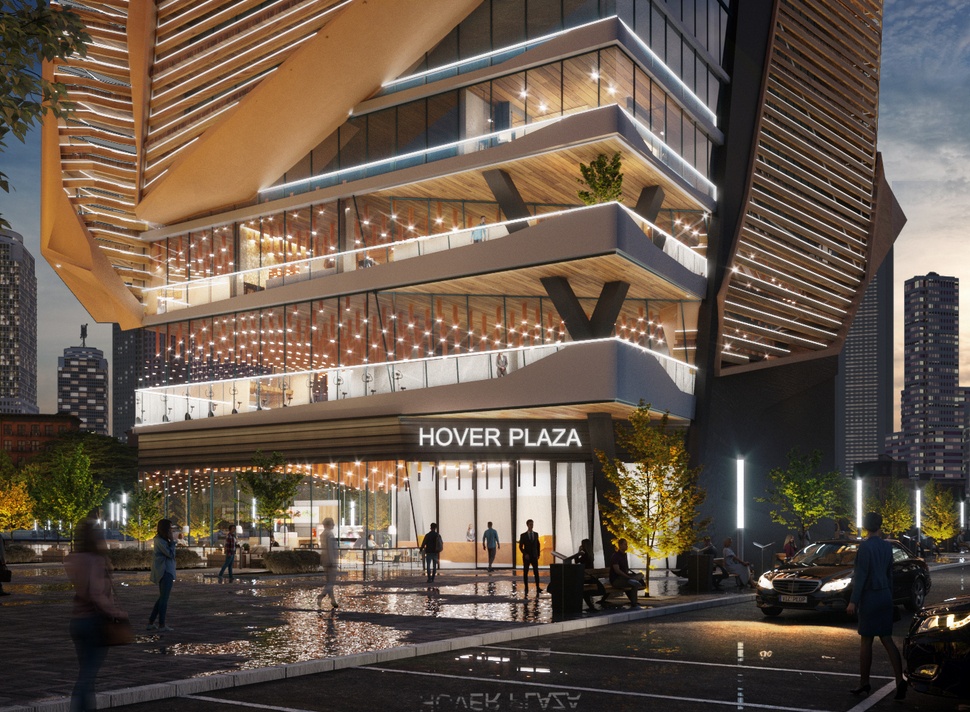AI in 3D Exterior Rendering: Transforming Architectural Visualization
At YouSee Studio, we are currently investigating the potential of AI technologies to enhance our traditional 3D modeling processes. This article provides insights into potential AI applications in 3D rendering, reflecting our commitment to innovation and excellence.
The architectural world is experiencing a seismic shift, propelled by integrating artificial intelligence into 3D exterior rendering processes. This technological revolution is not just enhancing visualizations' quality but fundamentally altering how architects and designers approach their craft. The marriage of AI and 3D exterior rendering is ushering in an era of unprecedented creativity, efficiency, and realism in architectural visualization.
The Evolution of Architectural Visualization
Architectural visualization has come a long way from hand-drawn sketches and physical models. The digital age brought computer-aided design (CAD) and 3D modeling software, allowing for more precise and detailed representations. However, introducing AI into this domain catalyzes a quantum leap in capabilities.

Image from Yousee Studio
In 2023, the global 3D rendering market size was valued at $2.92 billion, with projections suggesting it could reach $9.27 billion by 2030, growing at a CAGR of 18.3%. This explosive growth is primarily attributed to the integration of AI technologies, which are revolutionizing the field at an unprecedented pace.
AI-Powered 3D Exterior Rendering: A Game-Changer
AI is transforming 3D exterior rendering in multiple ways:
- Enhanced Realism: AI algorithms can analyze thousands of real-world images to generate textures, lighting, and environmental effects that are indistinguishable from reality. This level of detail was previously unattainable or required hundreds of hours of manual work.
- Automated Scene Generation: AI can now generate entire architectural scenes, complete with surrounding landscapes, based on simple text prompts or rough sketches. This capability reduces the time required for initial concept development from days to hours.
- Real-Time Rendering: Traditional rendering processes could take hours or even days. AI-powered rendering engines can now produce high-quality images in real time, allowing for instant visualization of design changes.
- Intelligent Material Selection: AI systems can suggest optimal materials for different building parts based on climate, budget, and aesthetic preferences, streamlining the decision-making process.
- Predictive Lighting: AI algorithms can accurately predict how natural and artificial light will interact with a structure throughout the day and year, enabling more energy-efficient and visually appealing designs.
The Impact on Workflow and Efficiency
The integration of AI into 3D exterior rendering is dramatically reshaping workflow efficiency. A recent survey of architectural firms revealed that AI-assisted rendering reduced project completion times by an average of 37%, with some reporting time savings of up to 60% for complex projects.
This efficiency boost is not just about speed. AI is freeing architects and designers to focus on the creative aspects of their work. AI enables a more iterative and experimental approach to architectural design by automating repetitive tasks and providing instant feedback on design changes.
Redefining Photorealism
One of the most striking impacts of AI in 3D exterior rendering is the level of photorealism achieved. Traditional rendering techniques often needed help with subtle details like the play of light on different surfaces or the natural imperfections that make a scene feel lived-in.
AI algorithms, trained on vast datasets of real-world imagery, can now accurately replicate these nuances. In a blind test conducted by a leading architectural journal, design professionals could not distinguish between AI-generated renders and actual photographs 82% of the time, a testament to the technology's capabilities.
Democratizing High-Quality Visualization
Perhaps one of AI's most significant impacts on 3D exterior rendering is the democratization of high-quality visualization. Smaller architectural firms and independent designers, who previously may have needed more resources for extensive rendering work, can now produce stunning visualizations at a fraction of the cost and time.
This leveling of the playing field fosters incredible innovation and diversity in architectural design. A survey of emerging architectural practices found that 68% reported increased client acquisition after adopting AI-powered rendering tools, with many citing the ability to produce high-quality visualizations as a critical differentiator.
AI and Sustainable Design
AI is improving the aesthetics of 3D exterior rendering and playing a crucial role in promoting sustainable design. By accurately simulating environmental factors like solar gain, wind patterns, and thermal performance, AI-powered rendering tools are helping architects create more energy-efficient and environmentally friendly buildings.
A case study of a large-scale urban development project in Singapore showed that AI-assisted design and rendering led to a 23% reduction in predicted energy consumption compared to traditional methods. This intersection of AI, 3D rendering, and sustainability is paving the way for more innovative, greener cities.
The Human Touch in an AI World
While AI is revolutionizing 3D exterior rendering, it's important to note that it's not replacing human creativity but augmenting it. Architects and designers find that AI tools free them to explore more ambitious and innovative designs.
A survey of architectural professionals found that 78% felt AI tools enhanced their creative process, allowing them to iterate on designs more quickly and explore options they might not have considered otherwise. The human touch remains crucial in interpreting AI-generated suggestions and ensuring that designs meet aesthetic but also functional and emotional needs.
Ethical Considerations and Challenges
As with any transformative technology, integrating AI into 3D exterior rendering raises important ethical considerations. If AI systems do not have diverse training data, there are concerns about the potential homogenization of architectural styles. Additionally, intellectual property and authorship questions arise when AI plays a significant role in design generation.

Image from Yousee Studio
The architectural community is actively grappling with these issues. Professional bodies are developing guidelines for the ethical use of AI in architecture, ensuring that the technology enhances rather than diminishes the profession's values and standards.
Looking Ahead: The Future of AI in Architectural Visualization
We can expect even more profound changes in 3D exterior rendering and architectural visualization as AI technology advances. Some exciting developments on the horizon include:
- AI-powered virtual reality experiences that allow clients to "walk through" designs in real time, with the ability to make instant modifications.
- We are integrating AI with Building Information Modeling (BIM) systems for more comprehensive and intelligent design processes.
- AI algorithms that can generate multiple design options based on specific parameters vastly expand the creative possibilities of experienced architects.
Integrating AI into 3D exterior rendering is not just a technological shift; it's a paradigm change in how we conceive, design, and visualize architecture. As we stand on the brink of this new era, one thing is clear: the fusion of human creativity with AI capabilities is set to redefine the boundaries of architectural imagination and realization.
Contact us at YouSee Studio for captivating 3D renderings and immersive virtual experiences.
Karen Spacey is a content writer and the author of this article.



